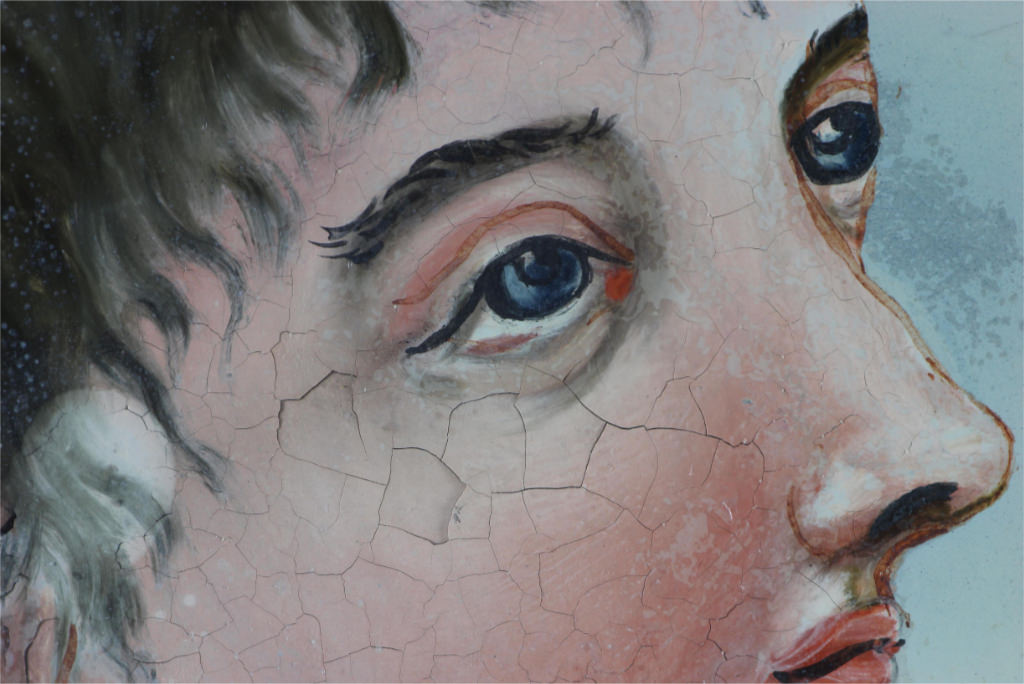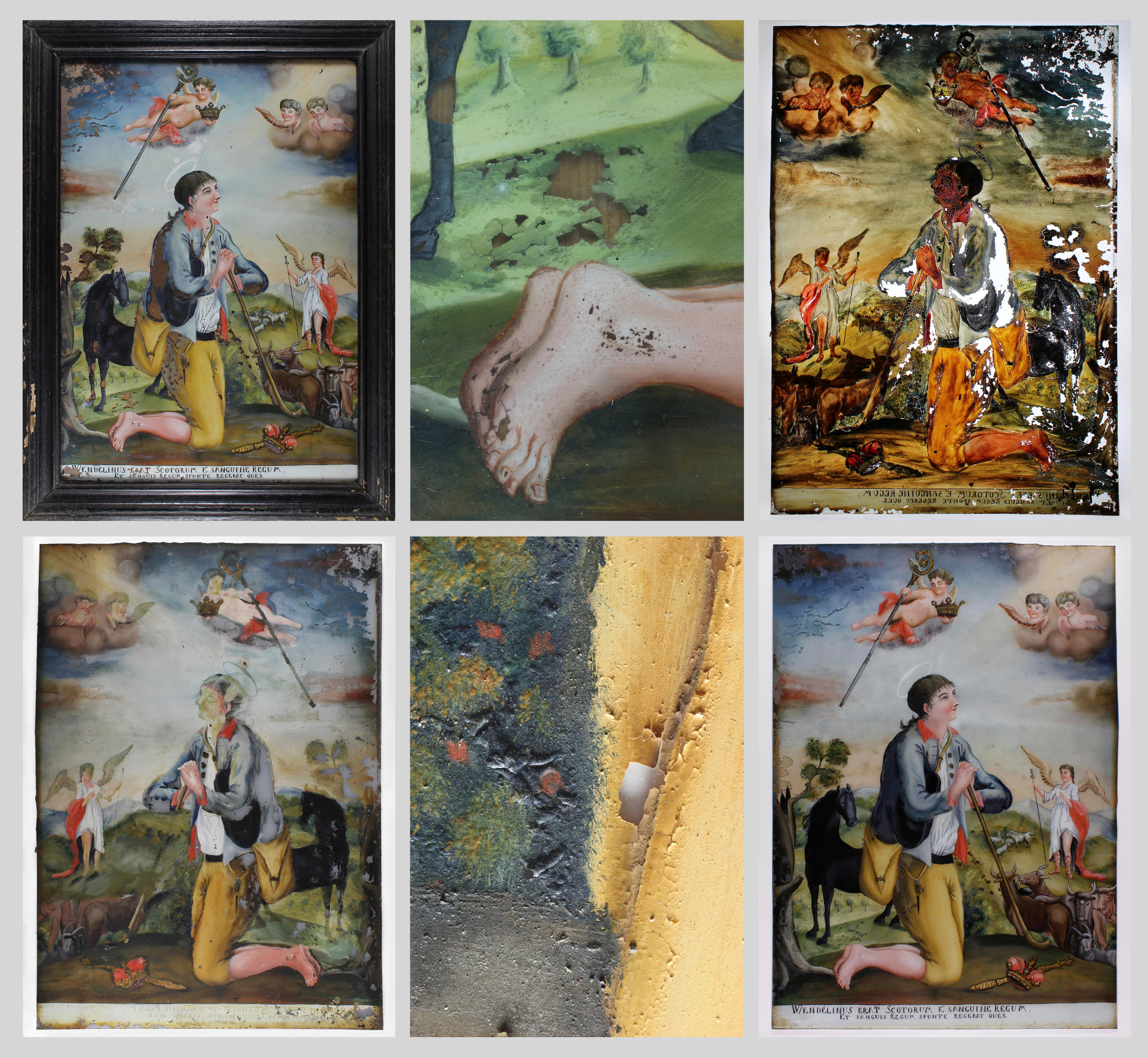Reverse Painting on Glass: Damage and Conservation
Conservation treatment is due to secure the substance of what has been found and to restore what has been destroyed or lost. Damages of reverse paintings on glass can be divided into two categories. Those caused as a result of damage to the picture carrier and those associated with changes to the binding medium and paint layer.
The most obvious damage is the breaking of the glass itself. For repairing the fragments have to be taped together and glue from the non painted side has to be introduced. The adhesive used, usually an epoxy resin, has sufficient adhesive strength and a refractive index identical to that of the glass. A freshly broken glass panel can be glued in a visually satisfactory manner, the joints are barely visible.
Loss of the paint layer arises primarily from failure of adhesion between the paint and the glass. The most typical disfigurement occurring is the distortion which seen from the front appear as a greyish, less saturated areas of paint. When decorating canvas or wood, the paint is anchored deep in the pores of the substrate. On a smooth glass panel the paint layer cannot establish a profound penetration, because the paint only adheres to the surface of the glass. Due to aging and changing temperature and humidity conditions the paint application is exposed to swelling and shrinking processes, delamination occurs.The conservation methods of delaminated paint can be broadly grouped into those which employ water-based fixatives, those which use solvent-based techniques and those which use wax. After treament the entire reverse glass painting regains its full adhesion and brilliance.

